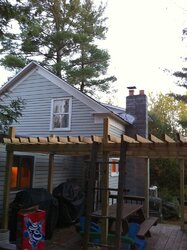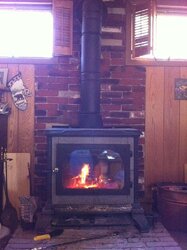O
oldspark
Guest
A 8 inch square tile is a lot different than a 8 inch round one in the way it functions.Battenkiller said:Todd said:It's the chimney. I use to burn a Homestead into an outside 6x10 masonry chimney and it acted similar. Once I relined with a 5.5 liner it was like night and day difference.
I think you and others are right, just checking in for confirmation with other owners. The owner's manual says go with an 8" tile flue if used in a masonry chimney, but it sure seemed to lack enough draft to me. I did mention putting a liner in, but the comment received a quizzical look from them both. Sadly, I suspect these folks will be perfectly happy with the sub-par performance of this stove, even while they are paying hundreds a month in propane and electric to "supplement" it.




